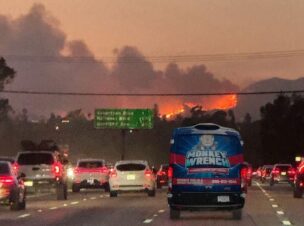Washington — Plumbing inspectors, manufacturers, engineers, contractors, labor representatives and other industry technical experts in Las Vegas voted overwhelmingly yesterday to make a change to plumbing codes that will ensure hot water pipes in new homes and commercial buildings are insulated. Overall, insulation of hot water pipes will shorten the amount of time spent waiting for hot water at showers and faucets, and cut hot water waste by 15 to 30 percent.
The vote took place during the review of proposed changes to the International Association of Plumbing and Mechanical Officials (IAPMO) Uniform Plumbing Code. The proposal was championed by the United Association of Journeymen and Apprentices of the Plumbing and Pipefitting Industry and the Natural Resources Defense Council.
“Everybody wins by requiring insulation of hot water piping. This was made possible by a joint effort of the NRDC and the UA and represents what can be achieved for the greater good of all of us when we work together,” said Mike Massey, Executive Director, Piping Industry Progress & Education Trust Fund.
“This is a great example of the untapped opportunities throughout the construction industry to make our buildings and our economy more efficient. By seizing these opportunities, we create good jobs for American workers. We ensure that homeowners and renters save money on their utility bills. And we protect our environment by being more energy efficient and by conserving water,” added Karen Hobbs, Senior Policy Analyst, Natural Resources Defense Council.
The change stipulates that hot water pipes be insulated for all homes and commercial buildings built after 2015. Since more than a quarter of all hot water draws occur within an hour of each other, insulation can help water sitting in pipes retain its heat long enough for the next use.
A recent modeling study by the National Renewable Energy Laboratory estimated that more than 10 percent of all the hot water drawn for showering in a typical single-family home is not hot enough to use. Americans take more than 200 million showers a day. Using EPA estimates of the amount of water drawn while showering, about 280 million gallons of hot water is being discarded without use every day nationwide — an amount equal to all the water sold on an average day last year by the Las Vegas Valley Water District. This is water that has been heated by a water heater, drawn into a hot water pipe, and then left cooling down in the pipe to a point where it is not hot enough to use the next time hot water is needed. Too often, these hot water pipes are uninsulated, making the cool-down more rapid and more complete.
By incorporating this proposal into the next edition of the International Association of Plumbing and Mechanical Officials’ model plumbing code, officials bring this change to communities in Nevada, California, Idaho, New Mexico, North Dakota and jurisdictions around the country that use IAPMO’s Uniform Plumbing Code as the model for their own local codes.




Join the conversation: